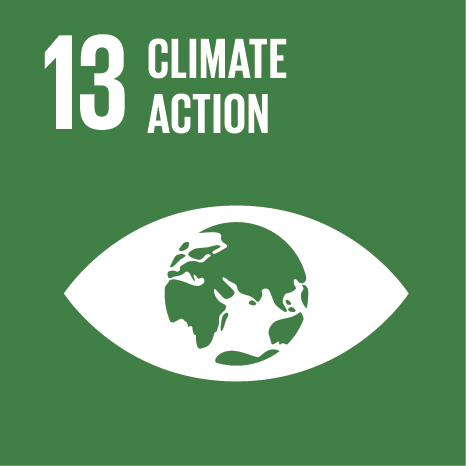Religious change is the great missing piece in the puzzle of social-ecological change in the world’s drylands. We propose to investigate how patterns of religious transformation mediate environmental changes in dryland areas of Inner Asia, Africa and North America, i.e., in the Mongolian steppe, Kenyan and Mozambican pastoral and farming systems, and the US Great Plains.Arid and semiarid areas, covering 41% of the world and sustaining two billion people, many of them food insecure, are uniquely challenged under global environmental change. Extensive interdisciplinary scholarship has examined the rapid, interconnected changes impacting the livelihoods of natural resource-reliant populations in Asian, African and American dryland social-ecological systems. Drylands are the birthplaces of the world’s great monotheistic religions. Christianity, the world’s second fastest growing religion after Islam, is expanding in Asia and Sub-Saharan Africa; and Buddhism is reclaiming its former space in Inner Asia. In drylands around the world, spiritual revitalization, radicalization & conversion to global religions are occurring alongside cultural change & economic diversification, political marginalization; and instability. Equally, shifts in land management, conflicts for natural resources, social unrest, and climate change, challenge drylands. Significant scholarship highlights the local power of religions: Pentecostal Charismatic Christianity is becoming a political force in Africa; Islamic radicalization destabilizes parts of Inner Asia and Africa; and Evangelicalism, and Buddhist/shamanistic beliefs, respectively, shape North American & Inner Asian politics. Religious organizations have led development efforts across the developing world. These works, however, do not acknowledge the influence of religious institutions, beliefs & practices on environmental management & have failed to examine the central role of religious shifts in mediating social-ecological dynamics in drylands. Despite excellent work on drivers of livelihood changes among dryland pastoralists, agropastoralists &farmers, scholars have yet to engage with religious factors as intervening variables in the above mentioned dynamics. Yet without such understanding, the picture of how marginalized dryland dwellers 1) understand current environmental challenges, and 2) make livelihood decisions that impact their natural resource base, resilience & welfare, is incomplete. This void creates conditions for ill-informed policy decisions, while the role that religions have been called to play in tackling environmental challenges remains overlooked. We aim to remedy this research gap by investigating entangled religious and environmental transformations in selected dryland areas of Inner Asia, Africa, and North America. We are applying to the FCT to support this timely project on religious beliefs, practices and institutions as critical players in contemporary processes of environmental change in drylands.
Our goal is to qualitatively characterize the linkages between religious and other drivers of social-ecological change across a diversity of dryland areas.
Through a multi-sited, comparative and fine-grained ethnographic study of religious beliefs and practices among Mongolian and Kenyan pastoralists, foreign missionaries and Mozambican farmers in northern Mozambique, and native-American residents of the US Great Plains, we will answer the following questions: 1) does religious change underly environmental change (how?); 2) does environmental change underly religious change (how?). We hypothesize that spiritual revival (Mongolia and USA), religious conversion (to Pentecostalism in Kenya) and Christian missionization (Mozambique) influence environmental outcomes by influencing people’s physical engagement with space and land management. Based on preliminary data, we also hypothesize that local experiences with negative impacts of climate change, land conversion and resource extraction are fuelling both religious revival and conversion processes in our study sites. We anticipate these interactions to be complex, direct and indirect, and multidirectional. Illuminating these connections is critical for understanding livelihood changes and land degradation in drylands; for overcoming simplistic narratives linking climatic instability, natural resource scarcity and religious conflict; and for informing policymaking. By providing a critical piece of the puzzle of change among dryland dwellers, we expect this research to shape debates on dryland social-ecological dynamics in the coming years and contribute to the vibrant scholarship on religion and the environment.
| Research Centre | Research Group | Role in Project | Begin Date | End Date |
|---|---|---|---|---|
| CEI-Iscte | Societal and Development Challenges | Leader | 2021-03-01 | 2025-02-28 |
| Institution | Country | Role in Project | Begin Date | End Date |
|---|---|---|---|---|
| School of Geography and the Environment, University of Oxford (SOGE) | United Kingdom | Partner | 2021-03-01 | 2025-02-28 |
| Name | Affiliation | Role in Project | Begin Date | End Date |
|---|---|---|---|---|
| Joana Roque de Pinho | Integrated Researcher (CEI-Iscte); | Principal Researcher | 2021-03-01 | 2025-02-28 |
| Troy Sternberg | Integrated Researcher (CEI-Iscte); | Co-coordinator | 2021-03-01 | 2025-02-28 |
No records found.
| Year | Publication Type | Full Reference |
|---|---|---|
| 2022 | Scientific journal paper | Sternberg, T., Roque de Pinho, J. & Batjav, B. (2022). Pastoral Khans: From Mongolian steppe to African savannah . Mongolian Journal of International Affairs. 23 (1) |
No records found.
No records found.
No records found.
No records found.
With the objective to increase the research activity directed towards the achievement of the United Nations 2030 Sustainable Development Goals, the possibility of associating scientific projects with the Sustainable Development Goals is now available in Ciência_Iscte. These are the Sustainable Development Goals identified for this project. For more detailed information on the Sustainable Development Goals, click here.

 Português
Português



